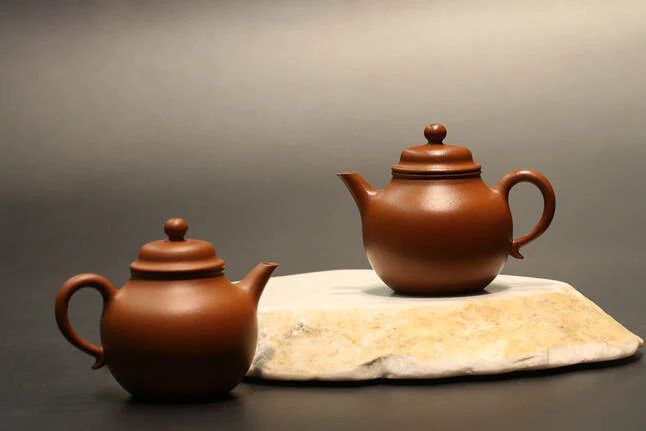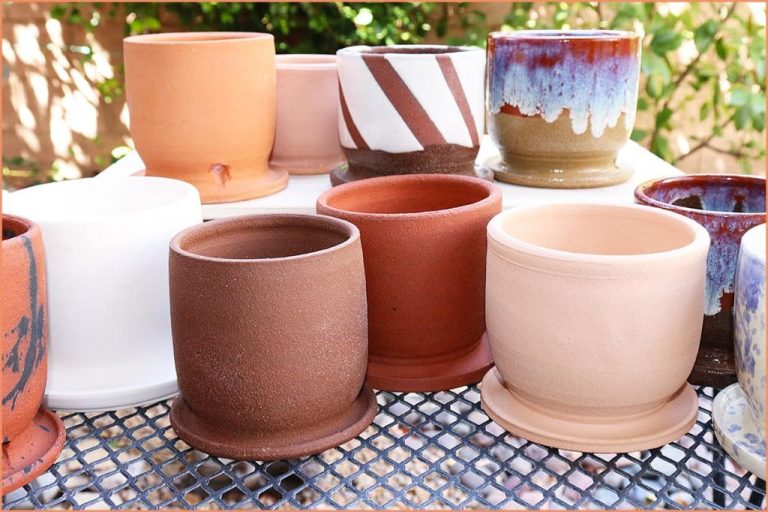How Long Does It Take For Clay To Harden?
Introduction
Clay is a popular material used for pottery, sculptures, and construction materials like bricks and tiles. Clay goes through a chemical process called “hardening” or “drying” where the water content is removed, causing the clay particles to bind together and become hard. Knowing how long this hardening process takes for different types of clay is very useful information for crafters, ceramic artists, brickmakers, and builders. It helps them properly time their projects and arrange drying setups to speed up or slow down the drying rate when needed. By understanding what factors affect clay’s drying time, you can better plan your clay projects and ensure your creations come out just the way you intended.
Types of Clay
There are three main types of clay used in pottery and ceramics:
Earthenware
Earthenware is a porous clay that is fired at lower temperatures, typically between 1700°F and 2100°F. It contains iron and other mineral impurities that enable the clay to melt at lower temperatures. Earthenware has a coarse texture and reddish-brown color. It absorbs water easily and is less durable than stoneware or porcelain.
Stoneware
Stoneware clay is denser and less porous than earthenware due to higher firing temperatures between 2200°F and 2400°F. The higher heat causes the clay to partially vitrify, resulting in non-porous finished pieces that are durable, chip resistant, and waterproof. Stoneware has a finer texture than earthenware and comes in shades of grey, blue, brown, and white.
Porcelain
Porcelain clay is the most highly refined with very low porosity. It is fired at extremely high temperatures between 2330°F and 2460°F to fully vitrify the clay. Porcelain has a fine, glasslike texture and is white in color. It is smooth, durable, translucent, and completely impermeable to water. Porcelain is commonly used for tableware, artware, and technical ceramics requiring high strength.
Factors Affecting Drying Time
There are several key factors that affect how long it takes clay to harden and dry:
Thickness
The thickness of your clay piece will impact drying time. Thinner pieces with less volume will dry faster, while thicker pieces will take longer. Large solid pieces may take days or weeks to fully dry and cure.
Temperature
Higher temperatures will accelerate drying, while colder temperatures will slow down the drying process. Try to maintain an ideal working temperature between 70-80°F. Placing clay in direct sunlight or near heating vents can help increase drying speed.
Humidity
Low humidity environments allow moisture to evaporate from clay faster. High humidity will slow down drying. Try to avoid drying clay in damp, unventilated areas. Use dehumidifiers or fans to circulate air and create a low humidity environment.
Air Circulation
Air circulation across the surface of clay pieces will quicken water evaporation. Place a gentle fan near drying clay or ensure good airflow in the room. Stagnant air will slow down the hardening process.
Thickness
Thicker pieces of clay take longer to dry than thinner pieces. This is because there is more material that has to release moisture as it dries. For example, a 1/4 inch thick tile will dry in 12-24 hours at room temperature, while a 1 inch thick sculpture may take 7 days or longer to dry thoroughly.
The more depth the clay has, the longer water takes to evaporate from the center outward. A good rule of thumb is that drying time doubles for each 1/4 inch of thickness added. So if a 1/4 inch piece takes 1 day to dry, a 1/2 inch piece will take 2 days, a 3/4 inch piece 4 days, and a 1 inch piece around 1 week just for drying before bisque firing.
Temperature
Warmer temperatures significantly accelerate the drying process of clay. This is because heat provides energy that causes water molecules in the clay to vibrate and move faster. At higher temperatures, the molecules can more easily break free of the clay’s surface as vapor, a process known as evaporation.
For example, clay left to dry at room temperature around 70°F may take over a week to fully harden. However, the same piece dried in a 100°F oven or kiln can be ready in a single day. This is why many ceramic artists use kilns that reach 2000°F or higher to quickly dry and fire their pieces.
Outdoor drying time also varies greatly depending on the season. In summer, clay may dry in just 2-3 days, while in winter it may take 2 weeks or longer. The optimal temperature range for fast clay drying is about 75-100°F.
In summary, heat accelerates drying because it energizes water molecules and promotes faster evaporation. Warmer temperatures can cut clay drying time from weeks to days.
Humidity
Humidity has a significant impact on the drying time of clay. The more humid the environment, the longer it will take the clay to dry and harden. This is because humidity refers to the amount of moisture in the air. In humid conditions, there is already a lot of moisture present, which slows down evaporation.
When clay dries, the water molecules in the clay evaporate into the surrounding air. However, if the air is already saturated with moisture, the rate of evaporation decreases dramatically. The water molecules from the clay have a harder time escaping into the humid air. This causes the clay to dry much slower compared to low humidity environments where moisture evaporates rapidly.
For example, clay left to dry in a humid bathroom with no ventilation may take over a week to fully harden. The same piece of clay left in an air-conditioned room may dry in just 1-2 days. The more humid the environment, the slower moisture can evaporate from the clay.
Air Circulation
Air circulation plays a key role in accelerating the drying process by replacing moist air around the clay with drier air. As water evaporates from the clay, it increases the humidity in the surrounding air. This humid air makes it harder for additional water to evaporate. By circulating drier air, you continuously remove the moist air and aid evaporation.
To maximize air circulation:
- Avoid drying clay in confined spaces without ventilation.
- Use a fan or open windows to keep air moving around drying pieces.
- Place clay on wire racks or mesh screens rather than solid surfaces, allowing air to circulate underneath.
- Space pieces apart so air can easily flow between them.
- Rotate pieces periodically so all sides are exposed to airflow.
With good air circulation, moist air is whisked away, evaporation increases, and clay dries faster. Poor air circulation leads to a humid environment that slows drying.
Drying Setups
There are several common setups used for drying clay projects, each with their own drying rates.
Open Air: Simply leaving clay projects exposed to open air can allow drying but is generally very slow. Without fans or sun exposure, drying via open air can take weeks.
Sunlight: Putting clay out in direct sunlight will accelerate drying substantially compared to open air alone. The UV exposure and heat from the sun can harden clay in days if there is sufficient exposure.
Fans: Placing a fan near clay projects will generate air circulation and airflow which will evaporate the moisture and cause faster drying than open air. With a fan, projects can dry in days instead of weeks.
Dehydrators: Food dehydrators provide an enclosed heated space ideal for clay drying. The average dehydrator can dry clay in 1-3 days by blowing warm, dry air over the clay.
Kilns: While designed for firing clay, kilns can also be used to accelerate drying. Set to around 200°F, a kiln with good airflow can dry clay projects in just hours instead of days.
In summary, the drying time goes from weeks with open air to hours with kilns. Selecting the right setup depends on factors like the project size, clay type, and desired speed.
Tips for Faster Drying
There are several tips and tricks you can use to speed up the drying process for clay:
-
Roll out thinner sections – Thinner clay (1/4″ or less) will dry significantly faster than thicker pieces. Roll clay as thin as structurally possible.
-
Use baking soda – Sprinkle baking soda on wet clay to help absorb moisture. The sodium bicarbonate chemically pulls water out.
-
Use a heating lamp or dehumidifier – Direct, radiant heat from lamps or household dehumidifiers will speed evaporation.
-
Increase air circulation – Position a fan to blow air over the clay surface. Moving air accelerates drying.
-
Dry in the sun – Sunlight can rapidly drive off moisture. Place wet clay pieces outside on sunny days.
-
Pre-heat pieces in the oven – Quickly drying the surface layers in the oven firms up the clay enough to allow faster air drying.
With careful planning and these tips, you can cut clay drying times significantly, allowing you to complete projects faster.
Conclusion
When working with clay, it’s crucial to understand the factors that affect its drying time. As we learned, the type of clay, its thickness, the temperature, humidity, and air circulation all play key roles in determining how quickly clay will harden. For example, a thin piece of earthenware clay will dry faster than a thick slab of stoneware clay at the same temperature. Likewise, clay dries quicker in a warm, dry environment with ample airflow versus a cool, damp one.
Knowing the expected drying time allows crafters and artists to plan projects accordingly. Trying to rush thick clay pieces by force-drying risks cracking and damage. On the flip side, leaving clay too long risks slow, uneven drying that can also cause flaws. By considering the type of clay and environmental factors, we can anticipate appropriate drying times and set up spaces optimized for hardening clay effectively.
Understanding the drying dynamics of clay is crucial knowledge for potters, sculptors, and any artist working with this medium. With the right expectations and preparation, we can avoid frustrations and create beautiful ceramic artworks and crafts that safely progress from soft clay to finished form.



